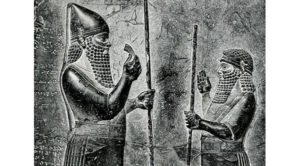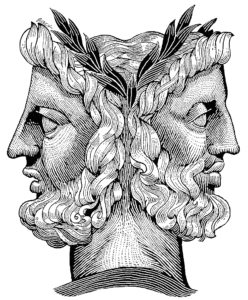

Saying farewell to the old year and welcoming in the new is a celebration observed around the world. In most countries it takes place on January 1. The festivities usually begin on December 31, which we call New Year’s Eve, and continue into the wee hours of January 1, New Year’s Day. The most popular traditions include attending parties, preparing and eating special New Year’s foods, watching fireworks displays and making resolutions for the coming year.
The History Of New Year’s Eve Celebrations: The Ancient Origins
There is nothing new about marking the New Year though. Festivities and celebrations have been welcoming the New Year in for thousands of years. While some merely gave people a chance to drink and revel with friends, many were linked to astronomical or agricultural events.
The oldest recorded celebration of the new year dates to around 4,000 years ago in ancient Babylon

According to Ancient Origins, the oldest recorded celebration of the new year dates to around 4,000 years ago in ancient Babylon. It was closely related to religion and politics. The vernal equinox is the day in late March with equal lengths of sunlight and darkness. To the ancient Babylonians the first new moon following the vernal equinox symbolized the rebirth of the natural world. They also considered it the beginning of the New Year and celebrated it with a religious festival called Akitu which lasted eleven days. Akitu also celebrated the mythical victory of sky god Marduk over the evil sea goddess Tiamot. During that time either the existing king reaffirmed his divine mandate or a new king was crowned.
The Evolution of New Year’s Eve Celebrations

The original Roman New Year occurred on the vernal equinox. The Roman calendar of that era consisted of ten months with 304 days. Over the centuries the year became no longer synchronized with the sun. The emperor Julius Caesar commissioned Rome’s major mathematicians and astronomers to revise the calendar. In the year 46 BC he established the Julian calendar, similar to the Gregorian calendar in use by most countries today. Caesar set January 1 as the first day of the year, in part to honor the god for whom the month is named, Janus, the god of beginnings and change. Janus had two faces, one peering back into the past and the other looking into the future. The Romans celebrated the holiday by offering sacrifices to Janus in hopes of gaining his favor for the New Year, decorating their houses with laurel and holding exuberant parties.
In medieval Europe, however, people found New Year’s celebrations too pagan for good Christians to indulge in. In 567 AD the Council of Tours abolished January 1 as the first day of the year. To give it Christian religious significance they renamed it the Feast of the Circumcision because it followed December 25 by eight days, the Jewish traditional length of time after birth for performing circumcision and giving the child its name.

When Pope Gregory the XIII introduced the Gregorian calendar in 1582 he reestablished January 1 as New Year’s Day. Though most Catholics accepted the Gregorian calendar almost at once, it took years for protestant countries to adopt it. The British did not adopt the reformed calendar until 1752. Until then the British Empire, including their American colonies, celebrated the New year in March.
Now most of the world celebrates New Year’s Day on January 1, whether you say, frohes neues Jahr!, bonne année!, Feliz año nuevo! or Happy New Year!
If you need some belated gift giving ideas for the loved one you missed at Christmas, take a look at Elfster’s New Year’s Eve Gift Guide. Elfster’s Facebook page is also sure to offer some any time ideas. You can also follow Elfster on Twitter @Elfster and on Instagram @Elfster.

